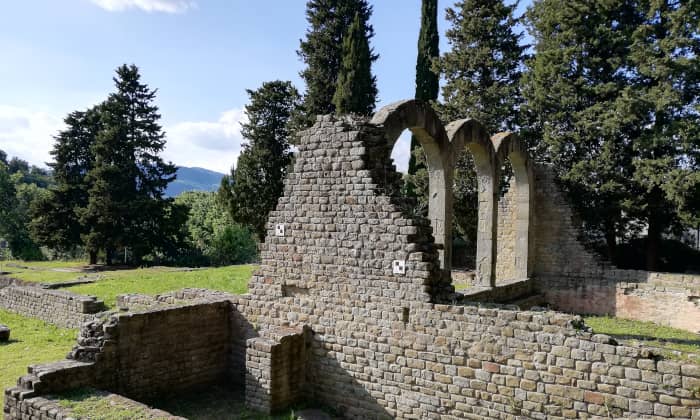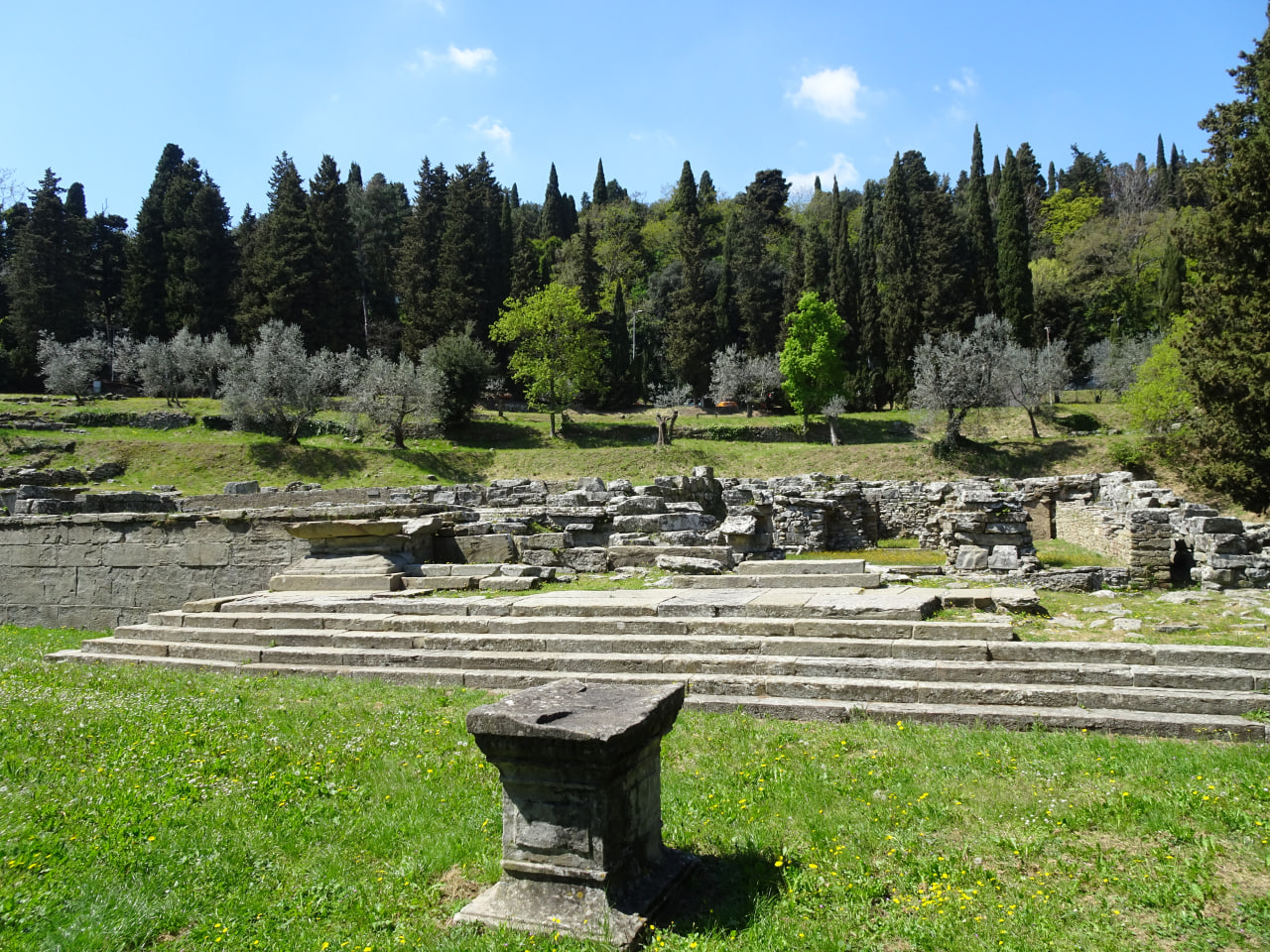Ancient history in the nature of the Archaeological Site
The Archaeological Area of Fiesole is delimited on the North by the Etruscan city walls and contains the Etrusco-Roman temple, the Roman Theatre and the Roman Thermal Baths. A Lombard cemetery was also discovered in the sacred area near the Etrusco-Roman Temple.
The Roman Theatre
The Roman Theatre was built between the I century B.C. and the I century AD.
The building had a huge half-round cavea, built right on the hill slope: the cavea was divided into four sections by narrow stairs in order to let people find their seat more easily. In the area below, there was the orchestra and a space where theatrical performances took place; a wall with a recess (pulpitum) delimited the stage (proscenium) on the front. Behind it there was the scaena frons (an architectural stage design), whose foundations and marble decorations are still visible in the Archeological Museum. Thanks to these decorations it is possible to say that the theatre was still being used until the III century AD.

The Thermal Baths
The Roman Thermal Baths were built between the I century B.C. and the I A.D. in the eastern part of the Archaeological Area.
On the West side there was the entrance (today some steps are still visible), from which Romans came into a monumental arcade. Inside the arcade there was an opening space with tanks and an area for physical activity. On the eastern side instead there was the covered building with the typical Roman thermal baths spaces: the Frigidarium (with cold water and three arches - rebuilt afterwards), the Tepidarium (lukewarm space between the Frigidarium and the Calidarium) and the Calidarium (a space with hot water and steam).
The building was warmed up by two ovens situated in the room right next to it: at present, the two ovens are visible since they have been partially rebuilt. The hot air came from under the floor (higher than the other rooms because of some little tile pillars) and spread out through the walls built with hollow bricks (tubuli), that formed some kind of simple pipe.
The Thermal baths were rebuilt during the III century AD and, during the next century, they were abandoned and used as a cemetery.

The Etrusco-Roman Temple
In the western part of the Archaeological Area some excavations brought to light the ruins of a temple used from the Etruscan period to the Roman age.
- Etruscan temple (arcaic period - VI century B.C.): we know few things about it because the only evidence found by archaeologists is part of the architectural decoration, nowadays inside the Museum;
- Etruscan hellenistic temple (IV - III century B.C.): the original Etruscan temple was probably destroyed and, at the beginning of the IV century BC, another temple (whose elevation is now still partially preserved) was built over it. A staircase led to a little colonnade in front of the sacred room reserved to the god's worship. Beside it there were two storage rooms and down the staircase an altar is still present. Inside, archaeologists have found a votive ditch with coins and votive bronzes: among these, a little bronze owl suggests the temple was dedicated to Minerva;
- Roman temple (I century B.C. - III century AD): during the I century BC the Etruscan building was destroyed and its ruins were included in the new and bigger Roman temple. Just like the original building, the Roman temple had an altar in front of the staircase. On the southern side a colonnade was built as a pilgrims' resting space. The temple was used until the III century AD, when the altar and the staircase were buried to build the new road between the temple and the thermal baths.

Lombard necropolis
When Lombards arrived in Fiesole at the end of the VI century AD, the ancient sacred area of the city became a burial ground; as a matter of fact, between 1910 and 1912, a lot of male and female burial were discovered there. Inside, there were grave goods, such as object made of iron, glass, bronze and ceramic. Other Lombard tombs have been recently dug in the centre of Fiesole, behind the City Hall, in the "Necropolis of Area Garibaldi". Inside the Archaeological Museum it is possible to see the grave goods and three recreated Lombard tombs.

